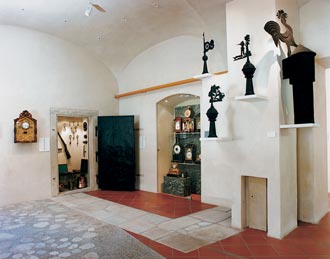Permanent Display 19. Master Craftsmen of Gradec and Kaptol
 In the past centuries many craftsmen from various parts of Austria-Hungary migrated to Zagreb, where they married and settled down as its citizens. In fact, the bulk of the population of Gradec consisted of craftsmen: in the 18th century, over seventy different crafts were registered in the town. The names of streets both in and around Gradec derived from the crafts that were practiced in them. They included the making of swords and spears, spurs and needles, rifles and clocks. In the 18th century, clockmaking flourished, because the clock had become an important part of every house interior.
In the past centuries many craftsmen from various parts of Austria-Hungary migrated to Zagreb, where they married and settled down as its citizens. In fact, the bulk of the population of Gradec consisted of craftsmen: in the 18th century, over seventy different crafts were registered in the town. The names of streets both in and around Gradec derived from the crafts that were practiced in them. They included the making of swords and spears, spurs and needles, rifles and clocks. In the 18th century, clockmaking flourished, because the clock had become an important part of every house interior.
In the 19th century, there were many goldsmiths and silversmiths in Zagreb, who stamped their products with their personal mark and the hallmark bearing the elements of the Kaptol and Gradec coats-of-arms.
One of the more prestigious crafts was bell founding, which had a long tradition in Zagreb.
In 1792 the Royal School Inspectorate issued a decree which made it compulsory for apprentices to attend drawing schools. The Zagreb Drawing School had a significant influence on the quality and artistic attainment of the crafts in Zagreb.
Nada Premerl

